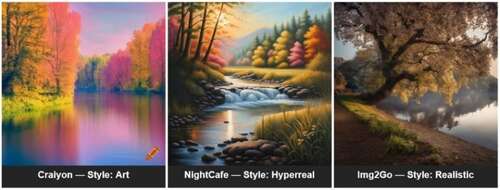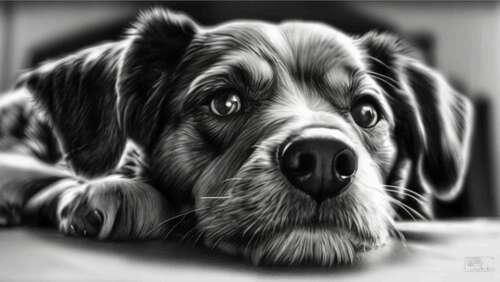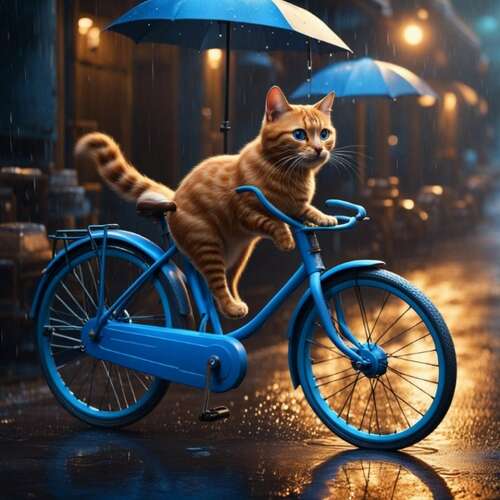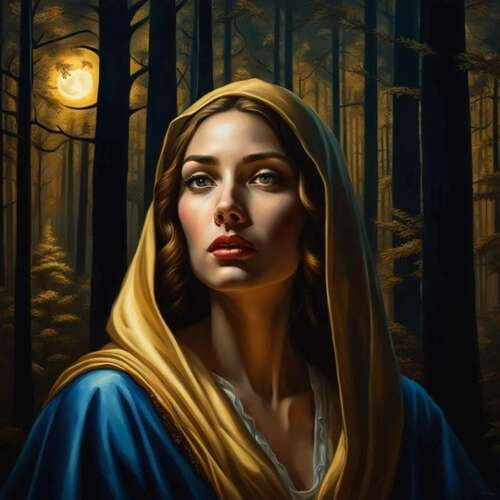The key to quality artificial intelligence art generator output is well-thought-out prompts. Generating AI art goes beyond slapping a few words together. It requires precision, imagination and a deep understanding of what you want the AI to create.
While basic prompts can give you quality results with generative AI tools like ChatGPT, Google Bard and other text-generative AI tools, text-to-image prompts require you to be specific in your requests to get the best results. This often means needing to understand what you want the end result to be and knowing how to describe the details, framing and lighting to get there.
While you build your confidence in making prompts, it’s a good idea to join AI art communities or even explore AI art to see what prompts were used to generate the output.
Jump to:
Structure of an AI art prompt
AI art prompts provide the necessary instructions and context for AI art generators, enabling them to generate artwork that tells compelling stories. A well-written prompt can help you properly represent your idea, while a poorly written prompt may generate an irrelevant image.
SEE: Explore these top AI art generators.
To get the best output, enter your prompt using the structure below:
- Primary request: Opening phrase, subject, theme or content, action verb, optional descriptor, setting or context.
- Secondary request: Art form, style and artist references.
- Additional settings: Lighting, colors and framing.
The opening phrase in the primary request is optional, depending on the tool. For instance, Midjourney’s opening phrase is /imagine. Different tools might use different ways to initiate the generation of art prompts, such as /imagine, create or generate. You can also use a descriptive word as your opening phrase.
In practice, the structure above will look like this as a prompt: Create a serene landscape, painted with soft pastel colors, near a tranquil river.
Figure A shows sample results of the above prompt when used on different AI art generators.
Figure A

Separating each element in your prompt with a comma is important to ensure clarity and proper structure. While there aren’t any standard word or character limits for AI art prompts — different AI art generators have different upper character or word limits — it is best to keep your prompts under 100 words.
The more descriptive your prompts are, the better the AI tool will be able to produce the results. However, long prompts can confuse the AI and lead to poor results. The more words you use, the less chance the image will align with your intended output.
How to write an AI art prompt
Now that you know how to structure an AI art prompt, it’s time to put it into practice. Before you start writing your prompt, clearly envision what you want the art to convey. Think about the subject, mood, style and details necessary to your concept.
Be clear and specific
The best AI art prompts follow a specific structure, as most prompts that produce a great result share a set of common characteristics: clarity, precision and specificity. When writing an AI art prompt, start by describing the content of your image.
If you want the picture to appear in a certain way, you can add an opening phrase or descriptive words to guide the AI art generator. Some examples include:
- A pencil sketch of…
- A digital artwork of…
- A photograph of…
- A graffiti of…
- An illustration of…
Add and describe the subject
After describing your art form in the opening phrase, proceed to describe your subject, which is the image’s content. Some examples are:
- A painting of a cat: Cat is the subject.
- A digital art of a convenience store: Convenience store is the subject.
- A pencil sketch of a dog: Dog is the subject (Figure B).
Figure B

Add more details to your prompt
To make your AI art prompt more effective, include additional details that will give the AI more context and guidance. You can specify the style or mood you want the artwork to have, the colors or color palette to use, any specific elements or objects you want to include, and the composition or layout of the image.
To add life to your image, you need to add various components to your prompts.
- Action of the subject: This tells the AI what action is being taken. For example, a cat riding a bicycle.
- Action execution technique: This tells the AI how the subject is performing the actions. For example, a car riding a bicycle boldly.
- The mood of the image: The mood can be described using adjectives to convey the atmosphere or emotion of the scene. For example, a happy cat riding a bicycle with confidence.
- Background description: This provides context and setting for the image and can include details such as location, time of day, weather or any relevant elements. For example, a cat riding a blue bicycle with confidence in the rain along a peaceful road (Figure C).
Figure C

Framing and lighting
Framing refers to how a subject is positioned in the image. You can specify the desired framing style, such as close-up, wide shot or any other technique. You can even mention a preferred placement or perspective of the subject within the frame, such as centered, off-center or from a specific angle.
Lighting plays an important role in all kinds of images, AI-generated or not. The position and quality of light in relation to the subject can impact the quality of your photo or illustration, from clarity to tone and emotion. You can enhance your prompt by adding a specific lighting style like Rembrandt lighting or chiaroscuro or a lighting source such as moonlight, sunlight or even a spotlight (Figure D).
Figure D

10 AI art prompt examples
Here are some AI art prompt examples to help you get started:
- An illustration of a polar bear.
- A high-resolution 3D render of Batman, cinematic lighting.
- Oil painting of a cottage near a pond, spring time.
- A futuristic cityscape at night, featuring neon lights, holographic billboards and advanced transportation.
- A digital painting inspired by a famous mythological story, such as Greek or Norse mythology.
- A 3D rendering of a futuristic cityscape at sunset, with flying cars and holographic displays.
- A picture of a person walking alone through a forest in the style of Romanticism taken from an aerial viewpoint.
- A photorealistic rendering of Michael Jackson.
- An impressionist painting of an old boot with brand neon green laces.
- Superman, cinematic lighting, realistic.
Finding AI art prompt ideas
Crafting the best AI art prompts can be challenging. It requires a lot of critical thinking. If you use a free AI generator, you may lose lots of valuable credits trying to create the perfect prompt to get your desired results; even paid tools on low plans may have limited credits.
Creating an AI prompt with primary and secondary requests and additional requirements that consider the action, mood and lighting can help you create effective prompts. And if you’d like help, you can always join AI art communities, like OpenAI’s server and Midjourney’s server, to learn how other creators craft their prompts.
PREMIUM: Consider creating an AI ethics policy before using AI art tools.
It’s also a good idea to visit AI art platforms like NightCafe and Craiyon, which allow you to see the prompts used for any of the images posted. If you’d like to leave the work completely to the machines, generative AI tools like ChatGPT, Google Bard and BingChat Enterprise can serve as AI art prompt generators.

